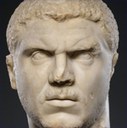0223 The Emperor as Living Image in Late Antique Authors
Identifiers (Article)
Identifiers (Files)
Abstract
Between the early imperial and early Byzantine periods, in descriptions of the ruler’s body we can identify, grosso modo, two main tendencies: A realistic strain (as exemplified by the imperial portraits in Svetonius) that is anti-iconic in that it prevented the idealisation of the ruler often found in his sculpted portraits; and another, present in particular in encomiastic literature, that followed these idealised artistic presentations. The encomiastic literature from Constantine’s I (r. 306–337) to Theodosius’ I (r. 379–395) time still places the accent on the ruler’s physical beauty as an expression of the particular relationship he had with the divine sphere. The first impression that Constantine’s appearance leaves in the bishops gathered at Nicaea in the description of Eusebius of Caesarea is that of an angelic apparition. In Late Antiquity both in Christian and pagan authors, the main characteristic of the new canon of imperial beauty was light. This light prevents the perception of the sovereign’s body and is considered in texts of the time as either an expression of the absolute distance between the emperor and common human nature, or a vain spectacle. The key text for imperial self-display in Late Antiquity is the famous description of Constantius’ II (r. 337–361) adventus to Rome. In Christian authors writing about angels, the model of beauty that the emperor referenced was the glorious Christ reigning in heaven.
Statistics


License

This work is licensed under a Creative Commons Attribution-NonCommercial-NoDerivatives 4.0 International License.



